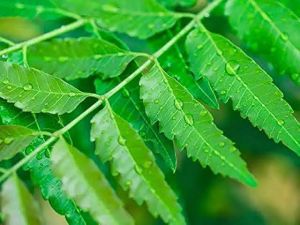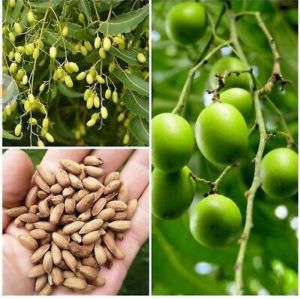Neem, scientifically known as Azadirachta indica, is a versatile tree native to the Indian subcontinent and has been revered for its numerous medicinal properties for centuries. Its seeds, leaves, bark, and oil have been extensively used in traditional medicine, agriculture, cosmetics, and more. In this 500-word description, we will delve into the various aspects of neem seeds and leaves, highlighting their uses, benefits, and significance.
**Neem Seeds:**
Neem seeds are small, oval-shaped kernels found within the fruits of the neem tree. These seeds are rich in various bioactive compounds, including nimbin, nimbidin, nimbidol, and azadirachtin, which impart potent medicinal properties. Neem seeds are widely used in agriculture, pharmaceuticals, and personal care products.
In agriculture, neem seeds are prized for their insecticidal properties. Neem oil extracted from these seeds serves as a natural pesticide, effectively controlling pests like aphids, caterpillars, and mites while being environmentally friendly and safe for beneficial insects like bees and butterflies.
Apart from pest control, neem seeds find applications in traditional medicine. They are known for their anti-inflammatory, antimicrobial, and antioxidant properties. Neem seed oil is often used topically to treat skin conditions such as acne, eczema, and psoriasis. Additionally, it is utilized in oral care products like toothpaste and mouthwash for its antibacterial action.
**Neem Leaves:**
Neem leaves are another valuable component of the neem tree, revered for their medicinal and therapeutic properties. These leaves are rich in compounds like nimbin, nimbidin, quercetin, and β-sitosterol, which contribute to their pharmacological effects.
Read More »


